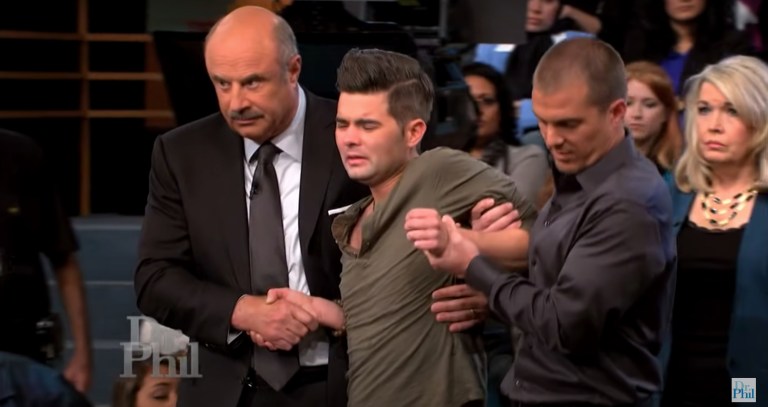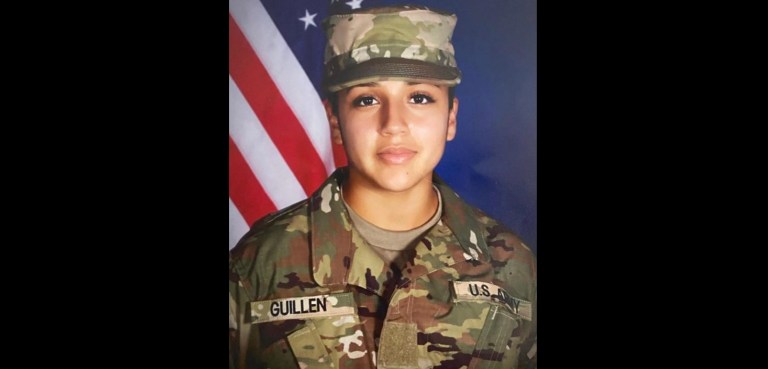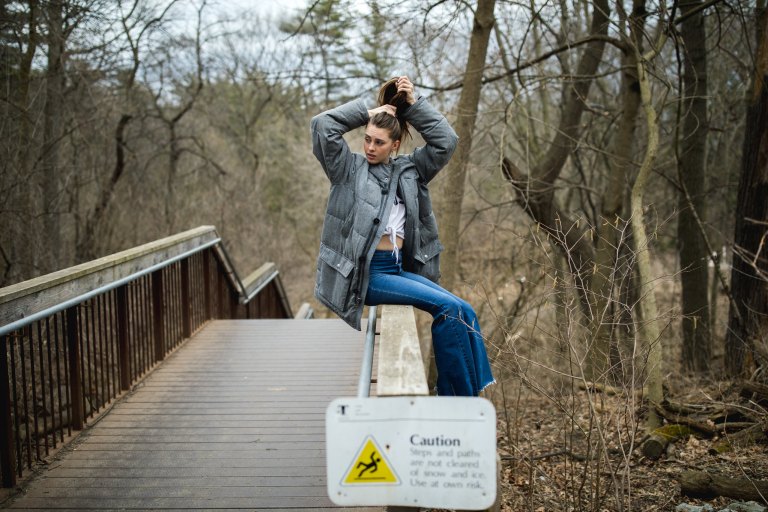What A Day Trip To Death Row Is Like
To be honest, all I know is what it’s like to be a visitor. But, I do know that being a visitor can change your worldview.
By Elaine West
When I moved to Texas a few years ago, I made a point to take advantage of its culture. I bought Lone Star beer, started wearing cowboy boots just about everywhere, and spent weekends swimming in different springs around Hill Country. I’ve come to love it as a scenic, ugly, crowded, vast, liberal, conservative, proud, two-stepping quasi-country.
This is to say, I’m not out to bash Texas. Rather, my time here as a law student has afforded me a firsthand study of tensions between state and nationwide policies — not the least of which is the death penalty. It’s no secret that Texas executes far more inmates than any other state. In keeping with my goal of experiencing Texas, I got involved in death penalty work doing internships and working with attorneys. It was heavy, complicated, and most importantly, thought-provoking.
Through this work I was allowed a few visits to see inmates housed at Texas’ death row. Choosing to go was a no-brainer — it would be a unique life experience and would help me better understand the people whose cases I’d spent hours helping with. Without a doubt, the first trip was the most nerve-wracking. Though my peer colleagues and I were prepped by supervisors on the day’s logistics, we had no clue how emotionally taxing it would be.
Visiting just one afternoon at a time, it was never lost on me that I was a tiny speck in that prison, with no real significance to anyone involved in the inmates’ stories. I can’t speak to what it would be like to visit a relative on death row. And even though I’ve been more than once, it was never like I was visiting anyone as a friend. I only have the perspective of someone who cared about these cases from a distance.
People ask me sometimes what death row is like. Oftentimes they ask if I watched any executions (doesn’t work like that, and hell no). To be honest, all I know is what it’s like to be a visitor. But, I do know that being a visitor can change your worldview. Personally, I had allocated very little time to thinking about the death penalty meaningfully before law school. I fell into the eye-for-an-eye camp, probably because it was a pithy talking point rather than a thoughtful opinion (which it can be, just wasn’t in my case).
It seems from conversations I’ve had with colleagues and friends who have visited death row in the same capacity as me that our experiences are fairly similar. Some changed their opinions because of it (myself included) and some didn’t, but all agree that the experience is certainly not black and white. You are visiting humans who are flawed, who now have little to no self-determination. You are drained and conflicted afterward. It’s a day of being immersed in gray area.
6:00am
Swiping your alarm off, for a second, you contemplate not going on the trip. You’re too tired for this, and probably not ready—like, really ready. Debating death penalty theory over beers and studying capital punishment hasn’t prepared you for visiting death row in Livingston, Texas. As least, you don’t feel prepared.
You see that your mom sent a text: Good luck today. I know you don’t think it’s dangerous, but be safe! Love and hugs. It’s sweet, but you roll your eyes at her protectiveness. There will be glass between you and the inmates. You can handle it. Right?
7:00am
You grab some almonds and a water bottle for the road, and head out the door to meet the other people going on the trip today in the Whataburger parking lot. The sun is just starting to rise when the supervisor gets there to pick you up in a rented white van for the three-hour drive.
7:30am
You’re still groggy. The van heads east on U.S. 290 toward Houston, with a quick break for kolaches and breakfast tacos, of course.
9:00am
In the back seats some people sleep while the rest of you make small talk up front. It feels a bit off, to be chatting about House of Cards and how much SXSW has grown and can you believe the triple-digit days we had last summer, when all the while you’re on your way to a prison housing hundreds of men convicted of capital murder.
10:00am
The van passes through Huntsville, Texas. The supervisor tells you to look out the right window. It’s a prison, but not the one where you’re going. With a brief glance you can see the Huntsville Unit, a red brick compound shaded by tall Texas oaks. That, the supervisor says, is where the actual execution happens. The death row inmates are transported there the night before.
You drive half an hour more before actually getting to Livingston. The inmates live here, waiting until either: (a) their appeals are successful or (b) they go to Huntsville.
10:30am
Everyone in the van is awake now. The supervisor gives you all a run-down on the inmates you’re visiting today. As a group, you have to tell one inmate that his appeals have run out, and you’re supposed to pass on to another that his girlfriend wants him to write more letters. You cross your fingers that you’ll be the messenger for the girlfriend guy.
A few miles down a potholed country road, you see a huge parking lot in front of a compound. There must be 200 cars. Could there really be that many prison guards? Your pulse starts to pick up.
10:45am
The van turns in at a sign that announces: “Allan B. Polunsky Unit.” A large man wearing badges stops you at a guard post. Everybody out of the car, open the trunk. Pop the hood too.
The gate guard asks why you’re there. You think to yourself, there aren’t many possible answers. “Howdy, sir. We’re here at death row because we’ve heard great things.”
The van pulls into a spot and the supervisor reminds you all to leave everything in the van; only carry in your ID and quarters for the vending machines. Someone in the group brought an ice chest to keep the phones cool, so they don’t die from overheating in the van.
11:00am
You all shuffle through the front door of the Polunsky administration building. You have to go through security first. You put all your quarters onto the belt and are waved through the metal detectors.
Now, everybody gets a pat down. This is no watered-down TSA business. This pat down is thorough. Thank goodness you wore pants today. The guard decides that your shirt is modest enough to be around the inmates. She gives you the go-ahead — a smiley thumbs-up. It’s an odd welcome.
11:15am
You turn your ID into the front desk and are buzzed through to a purgatory-esque hallway between the administration building and prison grounds. The whole group is buzzed again, which lets you outside on the path to the Death Row visitation building.
The prison yard grass is green, literally. To your right, flowers are planted in the shape of a Lonestar. To your left is a floral outline of the State of Texas.
You’re led into the visitation building and sign your name on a sheet, but you don’t know why. You’re nervous; you would do most anything a guard tells you at this point. You’re buzzed no fewer than four more times, then you’re finally in the Death Row visitation room.
11:30am
The visitation room has dingy cinderblock walls, visitation booths, some vending machines, and a couple of round tables. The aesthetic is not completely unlike that of a public middle school.
A guard is sitting by the vending machines. She is friendly. “Good morning! Who are y’all here to see?” The supervisor gives her a list of names and their prison numbers. The guard tells you that they will be brought out shortly.
You wait an hour before anything happens. You stare at the vending machines for a while. Some machines have typical food, like Skittles and Hot Cheetos. Some are fancier, with yogurt, triangle sandwiches, and apples.
12:00pm
Waiting, you pace the room, inspecting the booths where you’ll talk to the inmates. Each is no bigger than a water heater closet, just a little wider than your shoulders. There is thick safety glass between the prison side and the free world side.
Your side has air conditioning; theirs doesn’t. Phones are connected to the walls by silver cords. One row of booths has a sign that says “ATTORNEYS.” The prison says the conversations on that row are not recorded. You wonder if that’s true.
12:30pm
You hear the guards letting the inmates into the booths, handcuffed. The supervisor calls your name, and your pulse picks up again. You walk over to the far booth and sit in the chair, wobbling and screw-loose.
You introduce yourself to the inmate and talk with him for hours about his childhood, his family, what he’s been reading in prison. You are both nervous about discussing the crime he was charged with. He might be ashamed or sorry. He might deny his guilt. He might be angry at the system that provided him a bad lawyer.
In any case, you cannot relate. You are privileged. You have always followed the rules. No one has ever blamed you for anything.
You smile through the conversation though, because this is the only social interaction he will get for the week, maybe month. It makes you feel profoundly sad.
4:30pm
The supervisor announces that you all need to wrap it up. You ask the inmate if he would like anything from the vending machines before you go. He politely declines, but you insist. He wants some chips. What flavor? It doesn’t matter. What else? Some fruit. Any dessert? No, I don’t like sweets. What do you want to drink? Um, soda. Any soda.
You jog over to the guard by the vending machines and ask if she can help buy some food for him. The supervisor explained this awkward procedure beforehand: The guard will watch you put the coins in the machine and press the buttons, but you can’t touch the food. She is the only person allowed to handle it. You feel like a pest while she watches you fumble with the quarters.
You go back to the booth and tell the inmate that his food will be brought to him in a minute, and does he need anything else? He says no. You say goodbye and hang up the phone. He nods his head.
4:45pm
The process of leaving the unit is almost as tedious as entering. Buzz, wait. Buzz, wait.
5:00pm
One more buzz, and you’re back in the free world. It’s easier to breath out here. The scraggly fields across the road from the prison, scattered with silos and lazy cows, seem expansive. Even though you were only inside the unit for the afternoon, your mind feels lighter outside of the gates. Your body feels lighter.
5:30pm
Piled back in the van, everyone is chattering about the afternoon, what the latest prison gossip is, books the guys have been reading, and complaints about the heat inside their cells.
Then it turns to the heavier stuff. Maybe one inmate was paranoid schizophrenic. Perhaps another had the functioning capacity of an 8 year-old. The supervisor is in the driver’s seat, fuming about how the courts are refusing to hear his client’s claims.
6:30pm
The chatter eventually dies down. Some people fall asleep. Nobody wants to stop for dinner. You want to get home.
Staring out the window, you play the afternoon’s conversation over and over in your head. You think about your inmate eating his chips and fruit, drinking soda, and waiting for the guards to retrieve him to go back to his cell.
8:00pm
The supervisor drops everyone back at the Whataburger. You drive back to your apartment. You can’t help but compare your life to the inmate’s; you are incredibly free.
A text comes in from Mom: Hope the day went OK. Call you tomorrow. Love and hugs.
8:15pm
You change into pajamas, walk into the kitchen, and open the refrigerator. Maybe you grab a pear and then put it back. You grab some strawberries and then put them back too. No fumbling for quarters, no rules about what you can and cannot touch.
8:30pm
You give up on dinner and get into bed, hugging your comforter over your shoulders. Jaw clenched, lump in your throat.
The thing is, you don’t know how to feel about it all — your day, your role, the inmates, the system, everything. It’s 8:30pm and you are exhausted. ![]()





